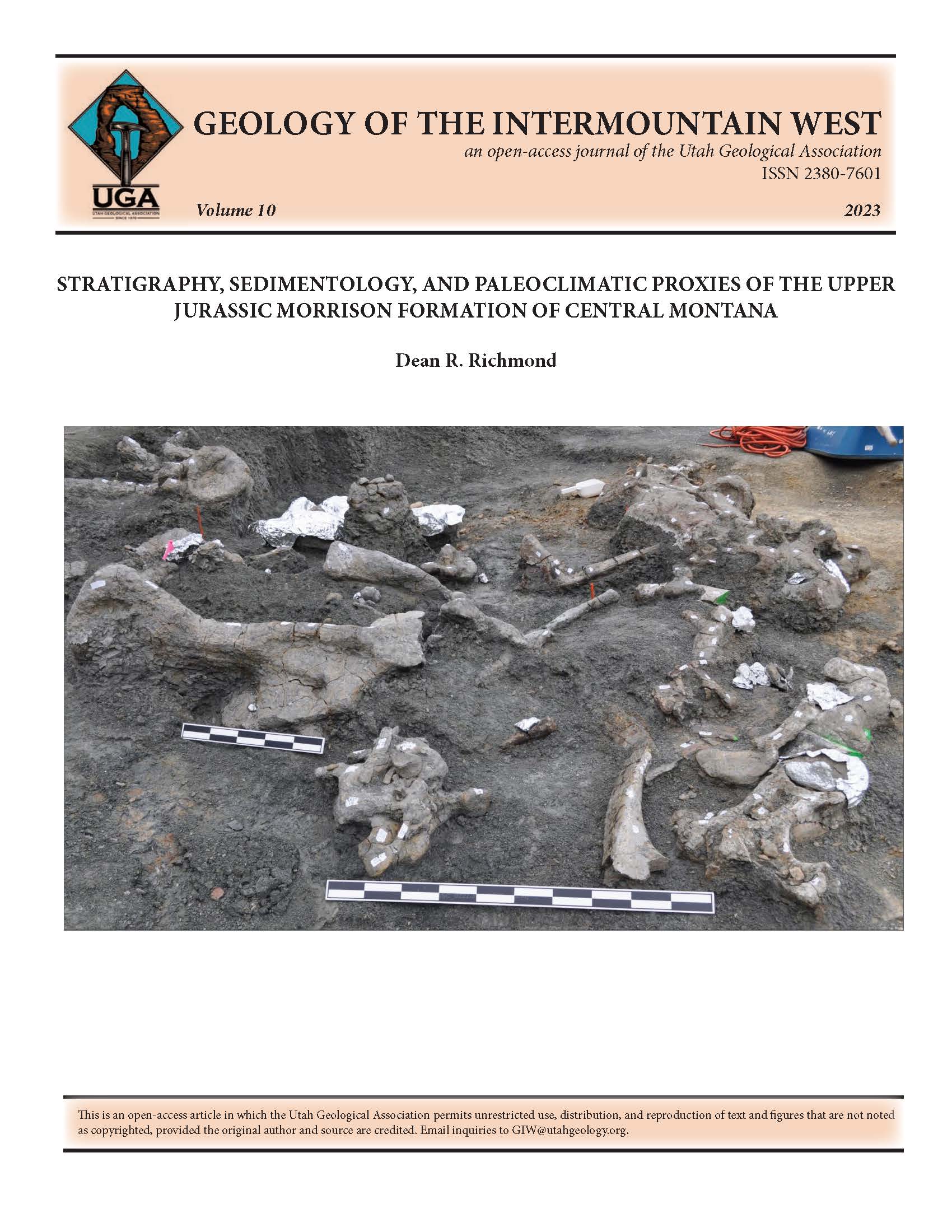Stratigraphy, sedimentology, and paleoclimatic proxies of the Upper Jurassic Morrison Formation of central Montana: Geology of the Intermountain West
Abstract
Since the discovery of dinosaurs in the late 19th century, the Upper Jurassic Morrison Formation has received considerable scholarly attention. However, the formation in central Montana needed to be sufficiently investigated. Recent dinosaur excavations from exposed Morrison strata on the southern flank of Spindletop dome near the town of Grass Range, Montana, prompted a review of the formation’s geology, paleobotany, and paleoclimate. A review of historical stratigraphic measurements of the formation in Montana reveals a considerable variance in measured thicknesses. Stratigraphic measurements and regional log data indicate that the formation averages 71 m thick across central Montana. A new regional isopach map of the formation from well-log data illustrates a broad distributive fluvial system that migrated from the southwest toward the northeast. The formation is divided into two informal facies in the study area: lower and upper depositional facies. The lower depositional beds represent the mud-rich distal-most distributive fluvial facies that overlies the stranded muddy tidal flat of the Swift Formation. An increased sandstone:mudstone ratio and small isolated fluvial channel and crevasse splay beds indicate that the upper depositional beds represent the slow progression of the distributive fluvial system. However, a review of the regional field stratigraphy and well-log data did not provide a regional correlatable facies change to warrant subdividing the formation into members.
The stratigraphic positions and climatic interpretations for lithologic, faunal, and floral paleoclimatic proxies are specified. The compilation of climate proxy data from central Montana demonstrates that the climate in this region was wetter than in southern parts of the Morrison foreland basin. The climatic proxies signify that the environmental conditions were variable during the Late Jurassic in central Montana, displaying changing temperatures with mesic and xeric intervals of unknown duration.





